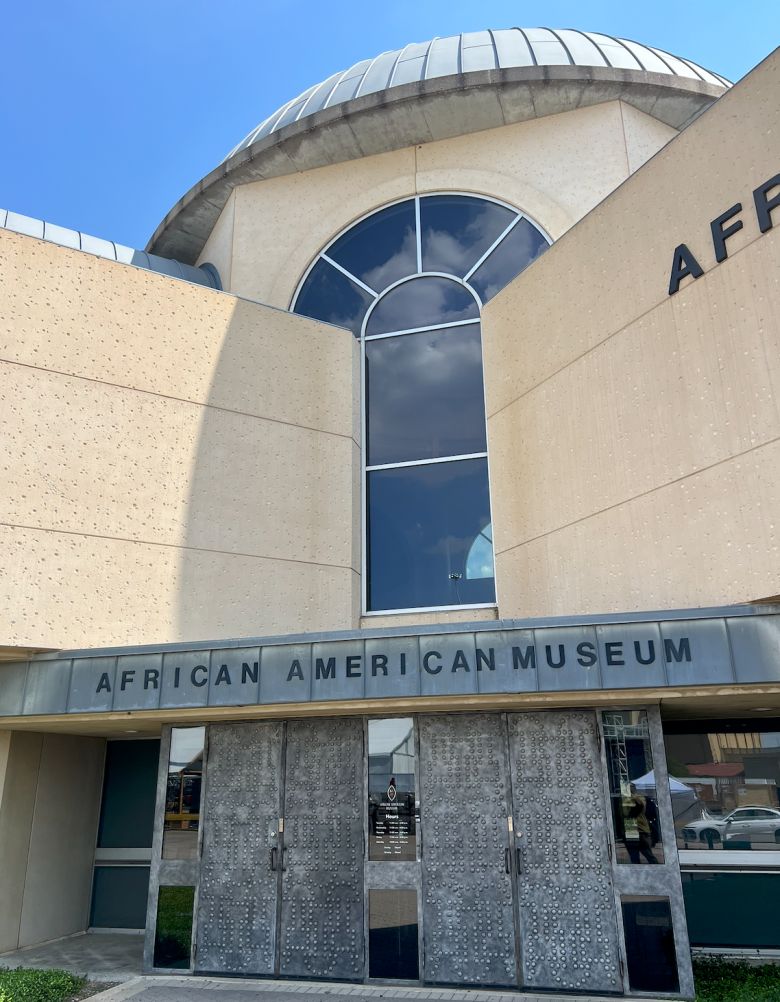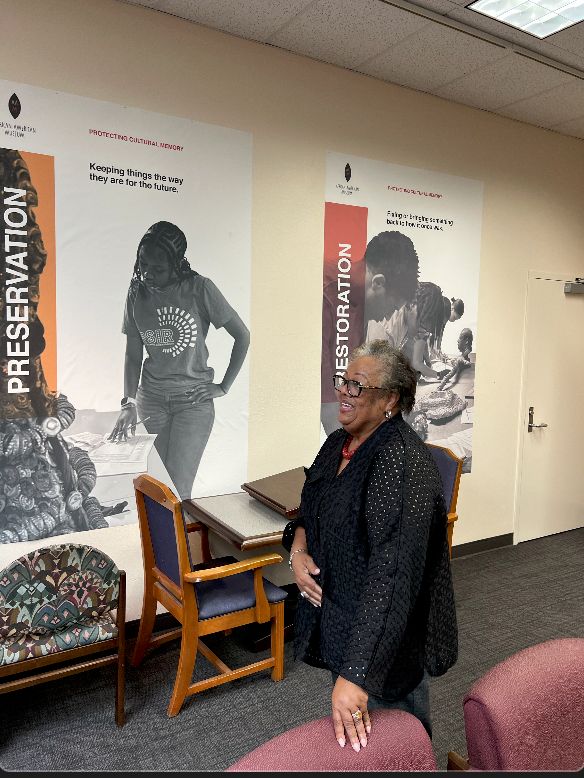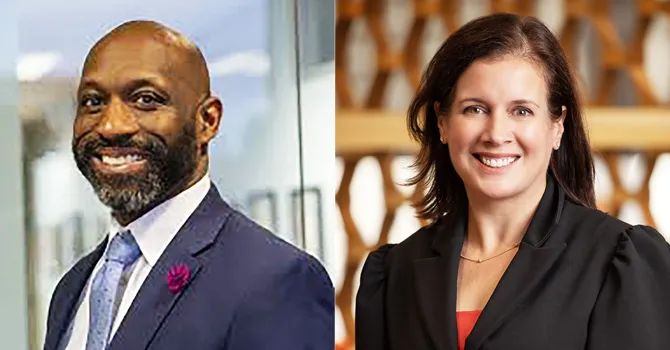Overview:
The African American Museum of Dallas, Dallas Black Dance Theatre, and The Black Academy of Arts and Letters are three historic Black cultural institutions in Dallas that have provided a space of learning, reflection, entertainment, and respite for the community for over 50 years. However, these institutions are vulnerable in the current political climate, as the presidential administration has targeted Black history and Black institutions through a series of executive orders. The institutions have recently faced challenges, including a public labor dispute, a settlement of over $560,000 to remunerate fired dancers, and a cut in funding. Despite these challenges, the institutions are committed to preserving their legacies and continuing their cultural programming.
Within the past month, the African American Museum of Dallas has much to celebrate. They have announced a new leader, Lisa Brown Ross. They received a new 3 million grant and 3 new exhibitions after the 50-year tenure and retirement of Founder and Director, Dr. Harry Robinson Jr. Dallas Black Dance Theatre, founded by the visionary Ann Williams. They just shared the retirement news of their long-time Executive Director, Zenetta Drew, and the results of their advisory stakeholder task force after an extremely public labor dispute.
The Black Academy of Arts and Letters’ (TBAAL) Founder Curtis King disclosed that TBAAL is temporarily relocating to the Women’s Museum in Fair Park.
 Curtis King, Founder and President of The Black Academy of Arts and Letters (TBAAL). Photo Credit: Jerry Hawkins Credit: Jerry Hawkins
Curtis King, Founder and President of The Black Academy of Arts and Letters (TBAAL). Photo Credit: Jerry Hawkins Credit: Jerry Hawkins
King shared renovation plans of their current home at the Kay Bailey Hutchinson Convention Center, while the City of Dallas builds a new one.
But what does all this change mean for the future of these historic Black cultural institutions, particularly in this political environment?
Federal Pressure on Black Institutions
Since the first day of his second term, President Donald Trump and his administration have targeted Black history and Black institutions through a series of executive orders.
From seizing control of the Smithsonian Museums, especially the National Museum of African American History and Culture, to firing the Librarian of Congress Carla Hayden and the Archivist of the United States Colleen Shogan, the current presidential administration is making a concerted effort to change, whitewash, and in some cases, erase Black history.
Trump has also threatened to remove federal funding from municipalities, K-12 school districts and universities that support racial equity and diversity, equity and inclusion practices. After the June 2023 Supreme Court ruling that colleges and universities can no longer consider race in admissions, a chilling effect and an environment of fear has been created and exacerbated where fascists and racists are being valorized, and formerly courageous people are reticent to speak up for Black people and other people of color, and to defend basic tenants of democracy.
However, for more than 50 years, Black cultural institutions in Dallas have provided a space of learning, reflection, entertainment and a respite for this community. The three highlighted here have ‘Black’ or ‘African American’ in their name (which makes them, unfortunately, vulnerable in 2025), were founded by Black people, and have a history of perseverance, struggle and excellence.
African American Museum of Dallas
 African American Museum of Dallas. Photo Credit: Jerry Hawkins
African American Museum of Dallas. Photo Credit: Jerry Hawkins
I sat with Margie Reese, the former interim Executive Director and current Chief Programs Officer of the African American Museum of Dallas, during their recent media day, and interviewed her about the current and upcoming focus of the museum.
Reese spoke in detail about the new exhibition ’90 YEARS OF IMPACT: THETA ALPHA’S LEGACY IN DALLAS,’ detailing the history and community work of the local Theta Alpha Chapter of Omega Psi Phi Fraternity, Inc., and ‘VISIBLE THOUGHTS: THE VISUAL LANGUAGE OF MORRIS YANGER,’ highlighting over 35 sculptures, maquettes and paintings of artist Morris Yanger.
Reese In Her Own Words
Here is Margie Reese in her own words about the third exhibit, which she described as “her pride and joy,” and the connected history of African American Museum of Dallas, Dallas Black Dance Theatre, and The Black Academy of Arts and Letters:
“The third exhibit…’PROTECTING CULTURAL MEMORY’ and it launches to the public our work about the importance of conservation and preserving our legacies. So ’PROTECTING CULTURAL MEMORY’ is a title of the show but it’s featuring the work of Gregory Warmack, an artist who called himself ‘Mr. Imagination,’ and his work has been shown here before back in 2012 or so, but we reinstalled it so that we can call attention to the need for us to also have a plan to take care of the artwork.
 Margie J. Reese interim executive director of the African American Museum of Dallas. Photo Credit: Jerry Hawkins
Margie J. Reese interim executive director of the African American Museum of Dallas. Photo Credit: Jerry Hawkins
So in the gallery you will see ‘Mr. Imagination’s amazing folk art, outsider art, and then you will see in the back of the gallery, a conservation lab. Just an idea of a small space so that the public can actually see conservators working in the gallery, taking care of artwork, just to say you know you can’t just take a some Windex and a toothbrush, and say ‘Oh we’ve done conservation.’ We want to show the scientific requirements of the knowledge that it takes for a real conservator to do their work, and to launch the idea that for the next 3 years, conservation is a priority.
That work is supported by a grant from the Texas Historical Commission that we won and announced recently; a 3 million dollar grant. Funding is also coming from Google that will help us digitize the work and then make it available globally. And we see ongoing funding and support for this and other creative projects that we do from the City of Dallas’ Office of Arts and Culture, and from the Texas Commission on the Arts. So we’re trying to bring as many resources to bear on this effort. It could be a project that takes us through the next 4 to 5 years, but we’re committed to it.
The goal is to bring our archival materials back to this building. They’re in other storage places. We’ve got records that you just wouldn’t believe of important Dallas African American leaders, from the education field to the medical field, sciences and the arts.
Reese carefully reaches for an archival newspaper clipping to show me.
I want to share with you…just to show you the kind of material we have here. This is an image [that we can’t see the date and so that’s a little bit frustrating] of Dallas Black Dance Theatre before it was Dallas Black Dance Theatre. It was a dance program for little African American girls at Bishop College. So the same location that spawned the African American Museum also gave birth to Dance Black Dance Theatre. As Dr. Robinson and Ann Williams, the visionaries that they were, began to take hold and ground the organizations that we now call our leadership, our flagship organizations. In the same space and time that Curtis King was launching The Black Academy.
Margie J. Reese, interim executive director of the African American Museum of Dallas shows archives. Photo Credit: Jerry Hawkins
So those three, you know, really strong agencies have covered all the genres, all the disciplines of the Arts over the years. So we keep that history here. That’s our job. And now it’s our job to make sure that the public understands why we collect, how we protect, and then going forward, how we can engage the community in also doing more storytelling and documenting of the African-American experience globally.”
Dallas Black Dance Theatre
I also spoke with Shawn Williams and Jennifer Scripps, Co-Chairs of the Dallas Black Dance Theatre Advisory Stakeholder Task Force.
 Shawn Williams, vice president of Public Affairs at Allyn Media–Photo courtesy of DBDT and Jennifer Scripps, president and CEO of Downtown Dallas Inc.–Photo by Thomas Garza Photograph
Shawn Williams, vice president of Public Affairs at Allyn Media–Photo courtesy of DBDT and Jennifer Scripps, president and CEO of Downtown Dallas Inc.–Photo by Thomas Garza Photograph
The 17-member task force was formed after Dallas Black Dance Theatre (DBDT) management fired its 10 main company dancers in mid-2024, and after a public labor dispute, DBDT paid a settlement of over $560,000 to remunerate the 10 fired dancers and 3 dancers who had job offers from DBDT revoked. Dallas City Council also cut $248,000 in funding earmarked for DBDT’s 2024-25 season programming.
For six months, the task force reviewed the governance policies of the Dallas Black Dance Theatre and shared recommendations in a newly published 2025 report. This report coincided with the announcement of the retirement of DBDT’s long-tenured Executive Director Zenetta Drew.
A national search for Drew’s successor will start in January of 2026. I asked Shawn and Jennifer about their experience on the task force and what came from their endeavors:
Shawn Williams:
“It started out with, while this is an institution that we have to find a way to keep, to maintain, you know, this is an institution that is part of the fabric of Dallas, it’s internationally known. We want it to stay forever and ever, and to do so, this is what really needs to happen. And so, I think the consistency we heard was the most revealing to me.”
Jennifer Scripps:
“There was [..] a, catharsis. People wanted to talk…but we have to turn the page. And, you know, the definition of insanity is doing the same thing over and over again. So, what are the essential things: the commitment to excellence, the building in the Moorland YMCA. What are the things that Dallas Black Dance Theatre cannot- we as Dallasites cannot lose- that the Dallas Black Dance Theatre embodies so well?
That came out loud and clear…it was remarkable. It was one of the best groups…just across the board. And I give credit to Dallas Black Dance Theater that they were also people that wanted to serve and for life reasons, couldn’t…I was not deeply involved in Dallas Black Dance Theater, other than, Jerry, you will appreciate this, there are two pieces of property owned in Downtown Dallas privately by African American entities. Okay! So, like, when you start thinking through this, importance of this institution, I’m deeply committed to it from that vantage point, but I think everybody on the task force felt the same way that day. And I knew after that meeting, things are going to be okay.”
Jerry Hawkins: You know, the elders in the community have said that these three institutions are kind of like a triangle. They kind of rose up together and have a connected history. All of them are now in transition, in some way, including TBAAL, getting plans for a new facility and new season. How can the city, or the institutions that work with the city, support institutions like TBAAL, particularly in this season, as we are experiencing some tense political pressure on some of these institutions?
Scripps: I mean, I believe, that when you have 50 years, I forget the year all of these institutions were formed…
Hawkins: So Dallas Black Dance and African American, both 50 years.
Jennifer: 50 years, okay.
Hawkins: TBAAL is around that…it’s approaching.
Jennifer:
“Two things. It is important to recognize that these organizations did bootstrap it, and they still need support, even though they’re no longer young. That staying the course, just like we would with the Opera (The Dallas Opera), is critical. And I would even add, this is a generational thing. You have…these institutions all kind of came up in a post World War. Dallas Children’s Theater is going through transition.
We have a young cultural ecosystem, and these organizations are not endowed, probably at the same level as maybe some of the traditional white Anglo European organizations. They need capacity, building of boards, infrastructure, technology, and all of that support is what you need to build the arts ecosystem. But I would also say we have to make room for arts entrepreneurs, so it’s a both/and. ‘Cause if you only pour all of your money into buildings and the big guys, then the little guys fail…”
 Dallas Black Dance Theatre tour by Executive Director Zenetta Drew, 2021. Photo Credit: Jerry Hawkins
Dallas Black Dance Theatre tour by Executive Director Zenetta Drew, 2021. Photo Credit: Jerry Hawkins
Hawkins: Shawn?
Shawn:
“Yeah, I think as a new kind of generation of leaders comes up, it’s vitally important that they help with the sustainability of these organizations, that they become patrons, that they help in fundraising calls. Like, you know, I know as I was coming up, it was very important – these institutions…these very institutions were important. I wanted to support, but I just didn’t realize how important the financial resources are. And as some areas are drying up, there have to be new resource streams and revenue streams for these organizations, which is why with Dallas Black Dance Theatre, it is so important to regain the trust of the institutions, regain the trust of the city, regain the trust of the donor community…in order to be sustainable.
And so I think, you, this is a pivotal point, especially…with the future forward look of these organizations, specifically African American Museum, and Dallas Black Dance Theatre, who, you know, are going to be bringing in…when you have new people, you know, donors, stakeholders, leaders. They want to know who they are. They want to know about them…that these are folks they can invest in…And find the people who can be those advocates, which was missing…And so I think it’s important for folks, Jerry, that we know, to help make that transition, you know?”
The Black Academy of Arts and Letters
I talked to The Black Academy of Arts and Letters’ (TBAAL) Founder Curtis King last year while planning an event for Nikki Giovanni before her passing, and his pride about TBAAL remains palpable. King, energetic as ever, reflected on being mentored at Jackson State University by the legendary poet, writer and literature professor Margaret Walker, who dispatched him to Chicago to the 1972 Black Academy of Arts and Letters (BAAL) National Conference. Inspired and ready to act, he would go on to found the Junior Black Academy of Arts and Letters, Incorporated (JBAAL) in Dallas, Texas on July 17, 1977.
According to The History Makers digital archive, TBAAL became “the only African American multidisciplinary cultural arts organization housed inside a major urban convention center. TBAAL occupies 250,000 square feet of space in the Dallas Convention Center, and includes: the 1,750 seat Naomi Burton Theatre, Clarence Muse Cafe Theatre, James E. Kemp Art Gallery, and the Eva Jessye Gift Shop. TBAAL attracts hundreds of thousands of people annually.”
48 years later, Curtis King and TBAAL are still going strong, with big plans for a newly remodeled facility designed, in part by two award-winning and Black-led architectural and engineering firms, KAI and Dikita.
TBAAL will also continue its Emmy award-winning cultural programming as it moves temporarily to the vacant Women’s Museum in Fair Park, with the 2025 and 2026 Riverfront Jazz Festivals and TBAAL’s JAZZ AT THE FAIR in October during the 2025 State Fair of Texas.
 Historic Black cultural institutions in Dallas are navigating transitions amidst federal pressure on Black institutions and a shifting political landscape. Credit: Jerry Hawkins
Historic Black cultural institutions in Dallas are navigating transitions amidst federal pressure on Black institutions and a shifting political landscape. Credit: Jerry Hawkins
Learn more about the history of the African American Museum of Dallas, Dallas Black Dance Theatre, and The Black Academy of Arts and Letters in the links, and to support them, visit them, donate to them, and check out their websites and social media for upcoming events.
Related
